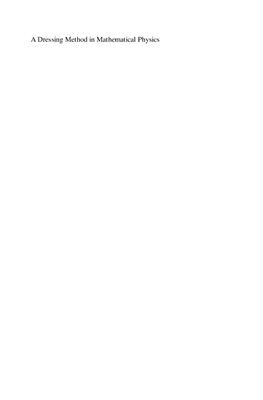Springer, 2007. - 386 pages.
This monograph systematically develops and considers the so-called "dressing method" for solving differential equations (both linear and nonlinear), a means to generate new non-trivial solutions for a given equation from the (perhaps trivial) solution of the same or related equation. The primary topics of the dressing method covered here are: the Moutard and Darboux transformations discovered in XIX century as applied to linear equations; the B?cklund transformation in differential geometry of surfaces; the factorization method; and the Riemann-Hilbert problem in the form proposed by Shabat and Zakharov for soliton equations, plus its extension in terms of the d-bar formalism.
Throughout, the text exploits the linear experience of presentation, with special attention given to the algebraic aspects of the main mathematical constructions and to practical rules of obtaining new solutions. Various linear equations of classical and quantum mechanics are solved by the Darboux and factorization methods. An extension of the classical Darboux transformations to nonlinear equations in 1+1 and 2+1 dimensions, as well as its factorization, are also discussed in detail. Whats more, the applicability of the local and non-local Riemann-Hilbert problem-based approach and its generalization in terms of the d-bar method are illustrated via various nonlinear equations.
This monograph systematically develops and considers the so-called "dressing method" for solving differential equations (both linear and nonlinear), a means to generate new non-trivial solutions for a given equation from the (perhaps trivial) solution of the same or related equation. The primary topics of the dressing method covered here are: the Moutard and Darboux transformations discovered in XIX century as applied to linear equations; the B?cklund transformation in differential geometry of surfaces; the factorization method; and the Riemann-Hilbert problem in the form proposed by Shabat and Zakharov for soliton equations, plus its extension in terms of the d-bar formalism.
Throughout, the text exploits the linear experience of presentation, with special attention given to the algebraic aspects of the main mathematical constructions and to practical rules of obtaining new solutions. Various linear equations of classical and quantum mechanics are solved by the Darboux and factorization methods. An extension of the classical Darboux transformations to nonlinear equations in 1+1 and 2+1 dimensions, as well as its factorization, are also discussed in detail. Whats more, the applicability of the local and non-local Riemann-Hilbert problem-based approach and its generalization in terms of the d-bar method are illustrated via various nonlinear equations.

